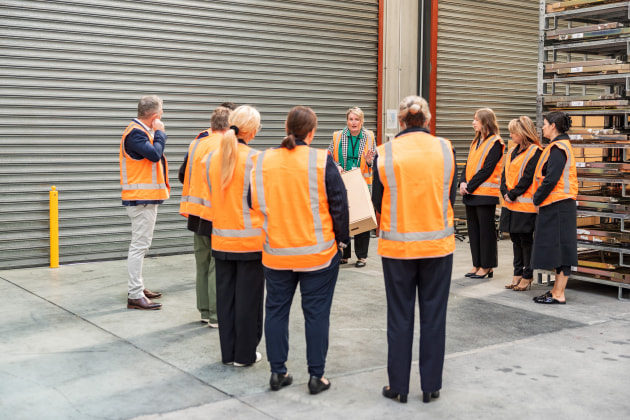Australia’s largest clothing manufacturer Australian Defence Apparel (ADA) has officially opened its new Canberra warehouse hub to better manage contracts for supply of clothing to the Australian Federal Police (AFP) and Australian Border Force (ABF).
The facility, located in the Canberra industrial suburb of Hume, features a 5,000 square metre warehouse, showroom and offices and a workforce of 30, where previously it was two.
ADA chief executive officer Chris Dixon said the Canberra hub would also eventually support a contract with NSW Health, now managed through the company’s Melbourne facility.
He said this hub aimed to improve the process of outfitting new AFP and ABF recruits and existing members.
“One of the frustrations with uniform procurement and provision is sizing and returns of sizing and not being able to get your gear on time,” he told ADM.
“This streamlines the whole process and makes sure it is the right gear the first time.”

ADA moved into an existing warehouse, requiring a major fit out before it could open for business.
Dixon said he had been involved in the garment business since the late 1980s, watching the industry diminish as production progressively moved overseas.
It’s now undergoing something of a renaissance.
“COVID has provided us with a bit of a glimpse of what things would be like if we lost that capability altogether,” he told ADM.
“We have been well supported by our ADF contracts. They have seen the value in local manufacturing and we still manufacture the majority of their standard combat uniform out of the Bendigo (Victoria) facility and across a suite of local suppliers.”
“We manufacture something in the vicinity of 700,000 units a year locally. We are the largest manufacturer with the regards to volume and we operate and own the largest manufacturing plant.”
ADA dates back to the Commonwealth Government Clothing Factory, founded in 1912 to supply uniforms to the new Australian military forces and also the Post Master General’s department, outfitting soldiers through two world wars and more recent conflicts.
With the Commonwealth divesting its shipyards and defence factories in the 1980s, the clothing side was privatised in the restructure which also saw the formation of ADI, now Thales. ADA is currently owned by Canadian company Logistik Unicorp.
ADA previously sourced some items from China but no longer does so. The group operates a production facility in Vietnam.
Where once ADA supplied uniforms to the Australian Defence Force, the company has diversified.

“We made a decision in ADA in 2016 to leverage some of our long defence heritage into the first responder space. The law enforcement area is key to that,” Dixon said.
As well as the AFP and ABF, ADA supplies garments to Queensland and NSW fire services Victoria police and NSW Health, plus the New Zealand Defence Force.
“We are always looking for new opportunities. We have enjoyed significant growth,” he said.
“We will continue to target the first responder space, defence, fire law enforcement, paramedics, health - those sorts of areas, hopefully providing a highly functional, great performing public value products to our clients.”
ADA sees some innovations in traditional processes. One is digital sizing, using a scanner akin to an airport security scanner.
“We are partnering with Bond University’s tactical research unit which has a focus on the tactical employee, from fire through to military and law enforcement,” he said.
“They look at things like load, appropriate carries of load, backpack positioning, armour, heat management and heat stress.
“We would design a garment in conjunction with the wearer and the academics to come up with, hopefully a product that performs and protects but also prevents injury, with longer wear life.”





